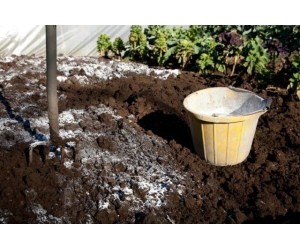Blog
Biological drugs, destructors and compost
Fast and safe organic fertilizer.
FEEDING PLANTS IN THE GARDEN BIOCENOSIS
FEEDING PLANTS IN THE GARDEN BIOCENOSIS
In intensive organic gardening, feeding plants is the main problem in early spring, when the growth processes need to be intensified. Active growth of the vegetative mass, the degree of flowering and proper shaping of the fruit depend on optimal protection with the necessary nutrients, first of all - nitrogen. The vast majority of labeled fertilizers either contain no nitrogen at all or have a low nitrogen content. Therefore, optimization of feeding is very important, and not only in organic production.
The myth that high yields in a fruit garden can be obtained without taking care of the garden, unfortunately, often leads to the loss of wonderful fruit tree seedlings and the disappointment of gardeners. Modern, high-yielding cultivars of apple, cherry, plum and pear trees, like all crops, need protection and feeding. If you are tired of unnecessary work in the garden, resulting in a pile of rotten and damaged fruit that needs to be constantly sorted out - then this offer is for you.
Applies an individual approach to each garden depending on production conditions, processing technology, soil condition and variety of plants/trees. We recommend different provisions for each accident. Our approach is based on three steps - healthy soil, healthy start and healthy leaves.

Healthy earth
Step "Healthy soil" - this is the main stage during which farmers carry out various agrotechnical projects while preparing the plot for sowing. During this stage, beneficial microflora is created, the balance of nutrients is improved and the decomposition of the mulch material is accelerated.
At this stage, we recommend using substances such as Ecostern and Groundfix. For example, when preparing a new plot for sowing, we recommend using the AGRAVIGOR biodestructor - for processing the remains of wild cultures before plowing. This substance:
- allows you to significantly accelerate the decomposition of plant residues;
- improves the structural composition and biological activity of the soil;
- supplies the availability of nutrients.

AGRAVIGOR contains spores and mycelium of Trichoderma fungi , including a complex of spores and living cells of natural bacteria for the degradation of cellulose . The total number of viable cells from 2.5 × 109 colony - forming units / cm3 . _ _ The substance is authorized for use in organic agriculture . Recommended introduction rate for garden plants : 1-2 l/ha. Methods of application : spraying , pre - sowing soil treatment , fertigation .
GROUNDBACTER - biofertilizer for the mobilization of phosphorus and potassium, and nitrogen phosphorus. This substance:
✔ allows you to significantly increase the utilization rate of the introduced mineral fertilizer at the expense of the action of beneficial microorganisms;
✔ allows you to transform unavailable forms of phosphorus and potassium into easily available forms and, in this way, ensures a positive balance of nutrients in the soil.
Groundcacter contains Bacillus subtilis, Bacillus megaterium var. phosphaticum, Azotobacter chroococcum, Enterobacter, Paenibacillus polymyxa . Total number of viable cells from (0.5 - 1.5) × 10 9 colony - forming units / cm 3 . The use of the substance both alone and in complex with other microbial substances not only improves the assimilation of the introduced mineral fertilizer, but also allows to reduce their amount. This, by the way, leads to saving funds and preserving biocenosis. Recommended introduction rate for garden plants : 3-5 l/ha 2-3 times during fertigation.



